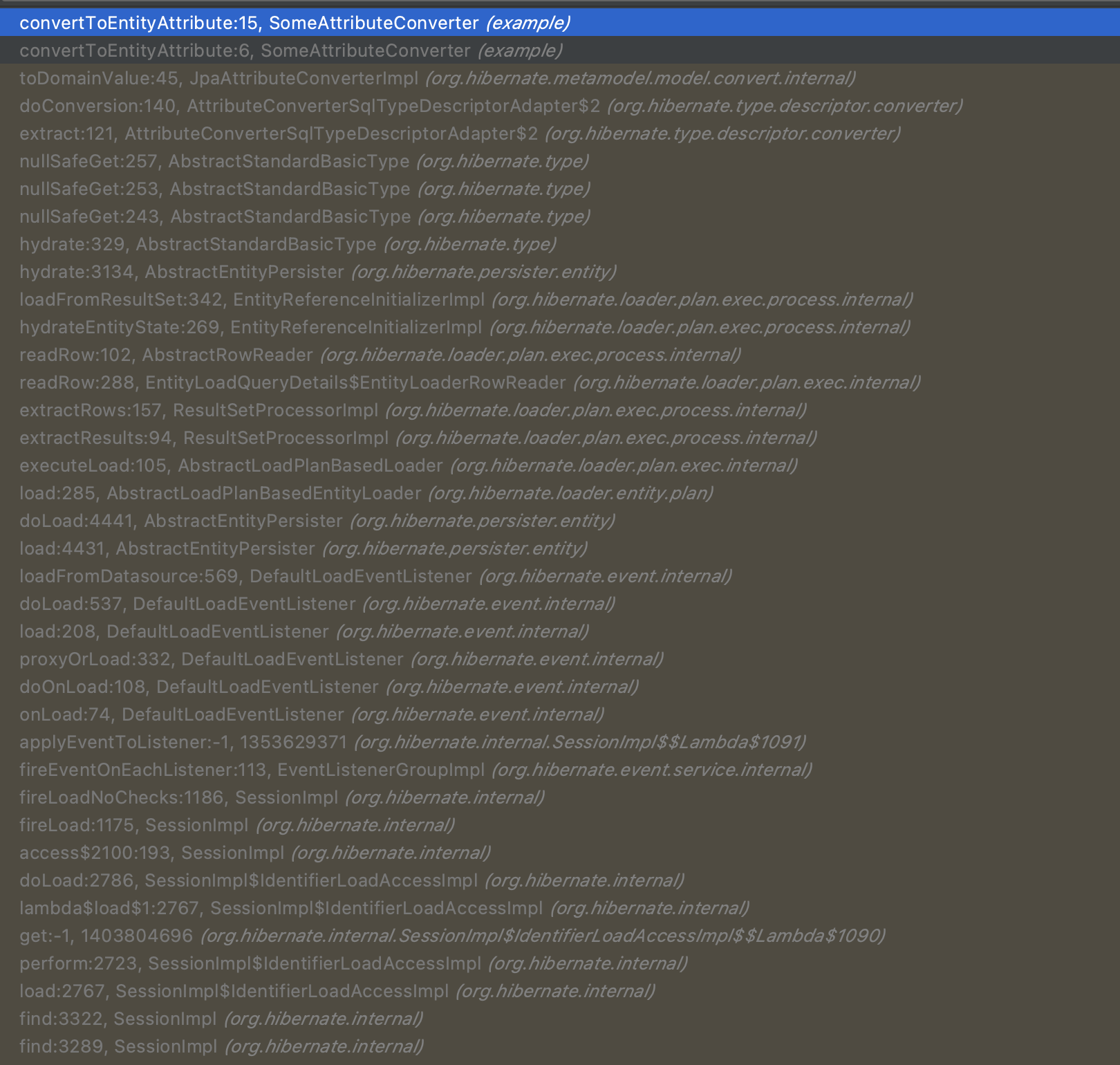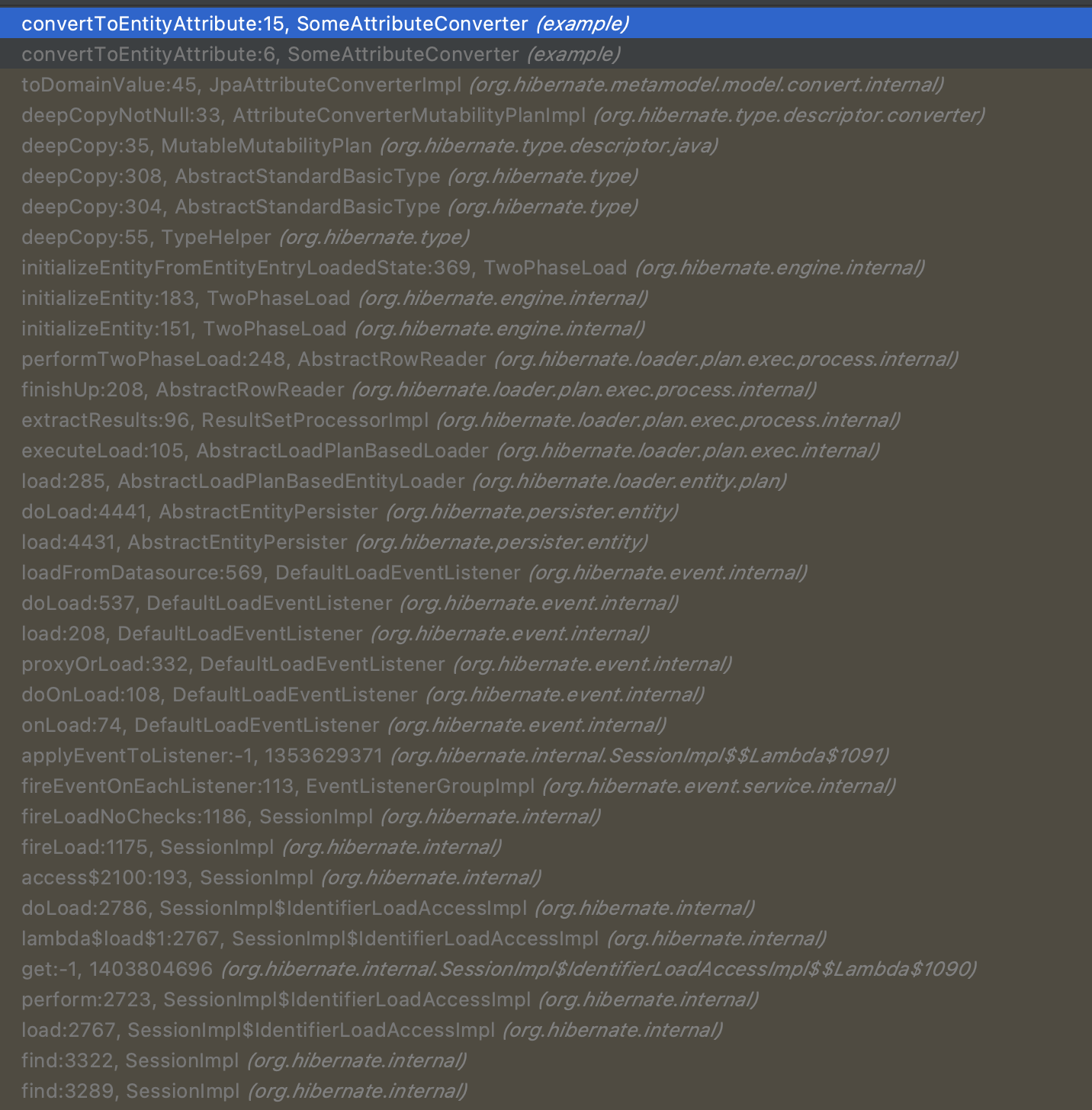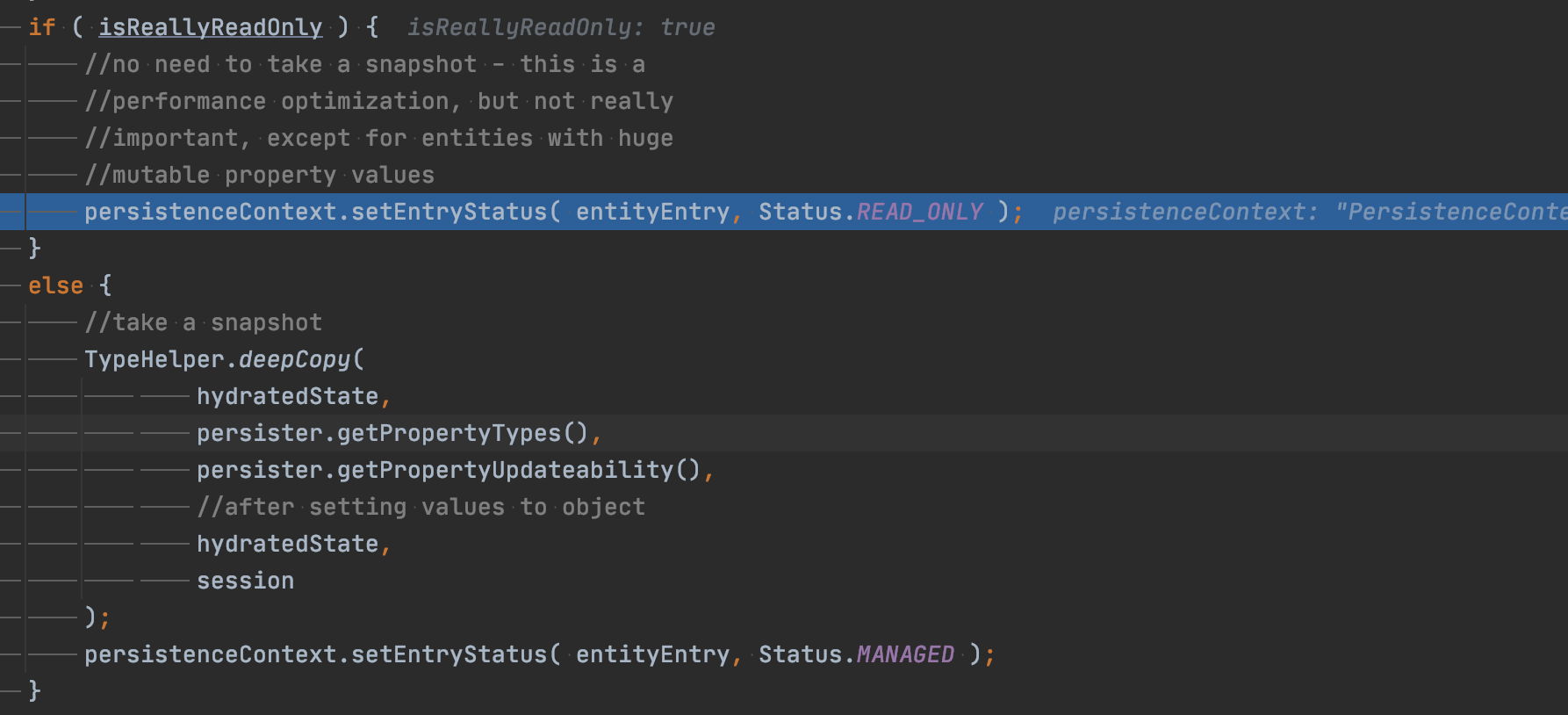(JPA) Readonly 트랜잭션은 Dirty Checking을 하지 않는다
3줄 요약
- @Transaction(readOnly = true)로 설정하면 select 할 당시 엔티티의 스냅샷을 만들지 않는다.
- (JPA) Readonly 트랜잭션은 트랜잭션을 시작하지만 flush를 하지 않는다에서 봤다 싶이 트랜잭션이 커밋될 때 flush를 하지 않는다.
- flush를 할 필요가 없기 때문에 Dirty Checking을 할 필요가 없고, 그에 따라서 엔티티의 스냅샷도 만들지 않는 것이다.
엔티티 구조
이해를 편하게 돕기 위해 엔티티는 아래와 같은 구조를 가진다.1
2
3
4
5
6
7
8
9
10
public class Parent {
private Long no;
private SomeType someType;
}1
2
3
4
5
6
7public class SomeType {
private final String helloName;
public SomeType(final String helloName) {
this.helloName = helloName;
}
}
SomeType은 JPA에서 모르는 커스텀 타입이기 때문에 컨버터를 만들어주자.1
2
3
4
5
6
7
8
9
10
11
12
public class SomeAttributeConverter implements AttributeConverter<SomeType, String> {
public String convertToDatabaseColumn(final SomeType attribute) {
return attribute.getHelloName();
}
public SomeType convertToEntityAttribute(final String dbData) {
return new SomeType(dbData);
}
}
테스트 편의성을 위해 convertToEntityAttribute 메서드에 브레이크 포인트를 걸고 확인해보면 편하다.
Readonly 트랜잭션이 아니면 스냅샷을 만든다 (엔티티를 딥카피한다)
테스트를 위해 Repository에 Readonly 트랜잭션이 아닌 findBy 메서드를 만든다.
(SimpleJpaRepositroy의 findById 메서드는 readonly 트랜잭션이기 때문에 커스텀 메서드를 만들었다.)1
2
3
4public interface ParentRepository extends JpaRepository<Parent, Long> {
Parent findByNo(final long no);
}
그리고 findByNo를 호출하면서 SomeAttributeConverter.convertToEntityAttribute 메서드는 몇 번 호출되는지 보자.


TwoPhaseLoad.initializeEntityFromEntityEntryLoadedState 메서드가 핵심이다.1
2
3
4
5
6
7
8
9
10
11
12
13
14
15
16
17
18
19if ( isReallyReadOnly ) {
//no need to take a snapshot - this is a
//performance optimization, but not really
//important, except for entities with huge
//mutable property values
persistenceContext.setEntryStatus( entityEntry, Status.READ_ONLY );
}
else {
//take a snapshot
TypeHelper.deepCopy(
hydratedState,
persister.getPropertyTypes(),
persister.getPropertyUpdateability(),
//after setting values to object
hydratedState,
session
);
persistenceContext.setEntryStatus( entityEntry, Status.MANAGED );
}
readonly 트랜잭션이면 성능최적화를 위해 스냅샷을 만들 필요가 없다고 하고 있고, 그게 아니면 스냅샷을 만들고 있고 그 안에서 딥카피가 수행되고 있다.
여기서 핵심은 트랜잭션을 생성하지 않더라도 스냅샷(딥카피)를 만든다는 것이다.1
2
3public interface ParentRepository extends JpaRepository<Parent, Long> {
Parent findByNo(final long no);
}
위와 같이 트랜잭션을 생성하지 않더라도 리드온리 트랜잭션은 아니기 때문에 else 구문을 탄다.
Readonly 트랜잭션이면 스냅샷을 만들지 않는다
이번에는 readonly 트랜잭션을 사용하는 SimpleJpaRepository.findById 메서드를 사용하여 스냅샷(딥카피)을 만드는지 직접 확인해보자.1
2
3
4
5
6
7
8
9
10
11
12
13
14
15
16
17
18
19
20
21
22
23
public class SimpleJpaRepository<T, ID> implements JpaRepositoryImplementation<T, ID> {
// ...
public Optional<T> findById(ID id) {
Assert.notNull(id, ID_MUST_NOT_BE_NULL);
Class<T> domainType = getDomainClass();
if (metadata == null) {
return Optional.ofNullable(em.find(domainType, id));
}
LockModeType type = metadata.getLockModeType();
Map<String, Object> hints = getQueryHints().withFetchGraphs(em).asMap();
return Optional.ofNullable(type == null ? em.find(domainType, id, hints) : em.find(domainType, id, type, hints));
}
// ...
}
위에서 보다싶이 SimpleJpaRepository는 타입에 readonly 트랜잭션이 적용돼있어서 해당 어노테이션을 오버라이딩 하지 않은 모든 메서드는 readonly 트랜잭션을 사용한다는 것을 알 수 있다.

이렇듯 JPA(하이버네이트)에서는 readonly 트랜잭션이면 성능최적화를 위해 엔티티의 스냅샷(딥카피)을 만들지 않는 걸 볼 수 있다.